Look at what the Kat dragged in 04/24 (if you have 2 hours to spare)
Greetings, friends.
Welcome to "Look at what the Kat dragged in" (f.k.a To-Dos-Letter). I've borderline-illegally force-subscribed you to this new newsletter environment. (You may opt-out any time- I won't hold it against you. Most likely).
As the transient nature of the internet goes, services vanish at the whim of their proprietors: tinyletter (the last host to my rabid musings) met such a fate. With the announcement of its departure, my motivation dwindled.
Plus- politics are relentless these days/years (q.e.d), you have to follow interdependent and multidirectional flows of capital and ideology and take it all in, constantly. It feels increasingly self-indulgent to ponder entertainment options while - for the sake of sanity or some other bad excuse- "repelling" the ongoing horrors and threats to people's lives and self-determination, near and far. Everyones is on edge while authorities are powered by potato starch and autocrats have cruise missiles for d*cks.(This might have impacted my lens (at least), but see for yourself.)
However, after a winter of microdosing vitamin D (ask Chloe Sevigny how I liked L.A., as soon as I made it to NYC, all was a+ ok): back on my bullshit.
This edition contains approximately 10 months' worth of open browser windows. I won't restrain myself or prioritize. (Not sorry.)(There was also a flurry of emails earlier -unbeknownst to me- as I got acquainted with the new interface - at least, this one isn't another notification.)
Some consolation for the daunting task ahead of fathoming this behemoth: know that you've made it onto my top-100 list. Others, often chosen arbitrarily, didn't, as you have to pay for access from the 101st subscriber - and let's be clear, this isn't a second vocation; it's more like community service).
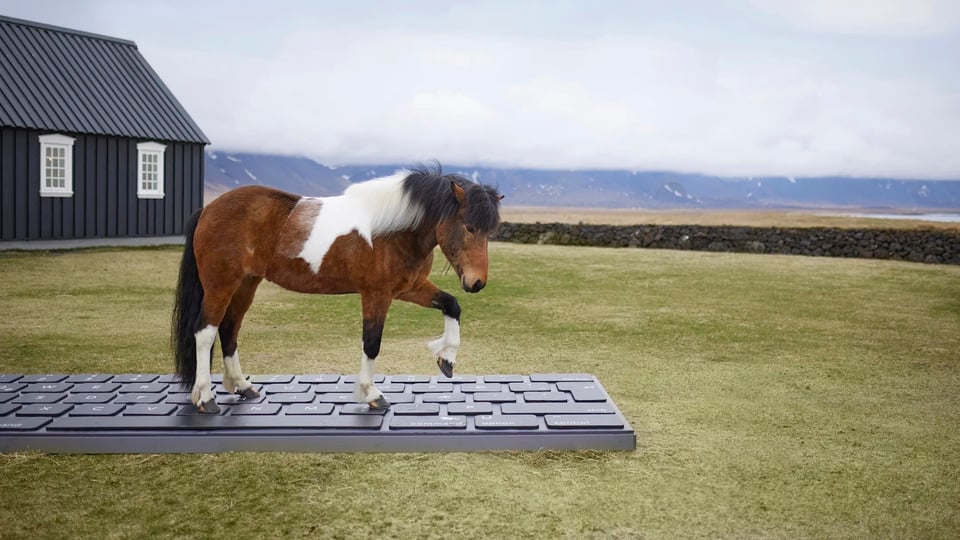
Those (warmer) days, I roamed the streets like a grinch with hay fever, irritated by everyone's sunnier disposition and the fact that some days already went above the temperature threshold that I personally deem endurable (23 degree C)/ way above the amount of events at any given day that seem manageable.
I went to the movies and other theatres quite a bit this winter, here (Berlinale), there (smaller cinemas in the U.S. as well as multiplexes), and at Sundance - and surprisingly, I didn't like what I saw much, neither "Zone of Interest", nor "Poor Things". All tried too hard, but "Anatomie eines Falls" instead was excellent, same as "La Cocina".
Further recommendations (series and longer formats, but also random articles from magazines): Zero fucks given (Adele Exarchopoulos), Sexuell verfügbar (German only), Palm Royale (Kristen Wiig) and at least partially, Bad Sisters (You wouldn't think that a series about psychological and domestic violence featuring Bonos offspring can spark joy- but it does).
If you, like me, are slightly disgusted slash annoyed by the Berlin undercurrents from the Speckgürtel - this documentary , Capital B, explains some of it. (Related, long gone, but so close: A new Berlin old town? Rechte Räume x Klosterruine Berlin - The monastery ruins of Berlin are one of the last remaining testimonies of Berlin's founding history. Today, they are located in close proximity to a city-political terrain at Berlin's Molkenmarkt - amidst projects of historical reconstruction and the designs of a socially, feministically, and ecologically just city.A tour explored the political and lobbying forces, agendas, funders, and interests behind reconstruction projects and revisionist construction between the City Palace and the construction site of the Molkenmarkt.) For more info on the “Rechte Räume”- project: https://www.igma.uni-stuttgart.de/forschung/rechte-raeume/
The one play that stuck out (and thus is always fully booked): Die Nacht von Lissabon. Director Hakan Savaş Mican’s adaptation follows Erich Remarques story on a refugee-journey from Osnabrück through Zurich and Paris to Lisbon, bursting geographical and temporal borders, weaving his personal travel journal together with the story of the original book, mirroring – in the fate of a couple – the fraught localisation of migrant workers and the unwritten biographies of the nameless dead in the tides of the Mediterranean.
There also worthwhile ballets-choreographies atm: Half Life & Forsythe.
You can debate me about my strong opinions about art (or politics), but as I learned recently from my morning readings - zealotry and bigotry can lead you to pretty dark places:
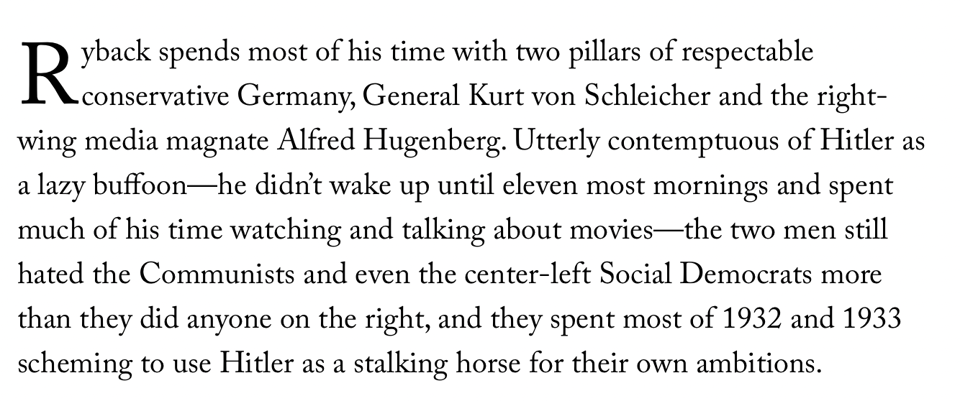
Also: have you read Joshua Cohen yet? The Netanyahus is a wildly genre-bending account of blending, identity, and politics. It centers on a fictionalized account of Harold Bloom's encounter with Benzion Netanyahu and his family(including his completely unhinged sons), at an upstate New York college in the late 1950s. It helps.
(Also informative how Cohen is battling the hegemony of Bertelsmann.)
Things to do and see
Monday, 22nd at DT: German premiere of Eternal You, the new documentary of my dear friends Moritz and Hans. Meet me at the bar afterwards (also: heartfelt congrats of course to everyone on this list who released a book, movie or a baby between the editions!) Eternal You discusses artificial intelligence and our finiteness, encountering the digital undead and psychological, ethical, and philosophical questions arising from digital immortality. Final tickets available.
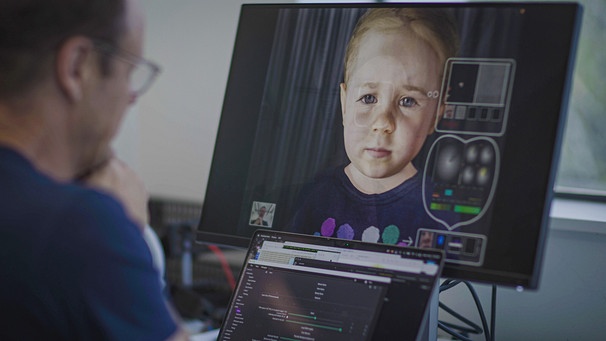
(Blatantly stolen from T.E & P.G.s newsletter, and by now over, because it took me too long to write up): This event at Helle Panke introduced Furio Jesi, an author who played a significant role as source of inspiration for a generation of intellectuals in the Italian left, including figures like Pasolini, Eco or Agamben, and his concept of the "mythological machine,". Jesi's work is experiencing a resurgence now in Italy, but remains virtually unknown in Germany, despite his focus on the specific historical context of German history. Jesi's writings center on the intersection of myth, ideology, and violence, exploring our collective memory and technology. (His book "Spartacus: Symbolism of Revolt," has been translated into German by Cinzia Rivieri and Dr. Frank Engster and will be published by August Verlag in early May.)
Echos der Bruderländer - HKW: What is the Price of Memory and What is the Cost of Amnesia? The exhibition and research project Echoes of the Brother Countries is dedicated to the often overlooked political, economic, educational, and artistic links, as well as the exchange and migration movements between the GDR and other socialist-orientated states, the so-called brother countries. The exhibition and research project brings together numerous positions (Visions and Illusions of Anti-Imperialist Solidarities) that create a common space for remembrance, dialogue, and reflection on transnational solidarities and contradictions.
(Diffrakt space rarely disappoints) - April 24th: The Space Age Optical Unconscious . When we think of space, we might think of Florida,Texas and a certain space cowboy, a realm for colonisation and resource extraction. And the moon. But Venus is the brightest object in the sky: The Soviet Venera-mission landed it successfully in 1970. Is it possible to release outer space from ideological projections and demilitarise perception? The visual colonisation of uncharted territories cannot be separated from what Paul Virilio called the industrialisation and militarisation of the optical field. Andrey Shental will share his research from family archives on optical space exploration as well as space age-inspired mass culture. After showcasing examples of Soviet educational films and international sci-fi cinema, he will present the director’s cut of his video project about the 13th Venera mission.
When in Düsseldorf: Digital Diaries - The group exhibition looks at how artists have experimented with diaristic forms in video and digital art from the 1970s to today. Inspired by the iconic work The Electronic Diaries of Lynn Hershman Leeson 1984–2019 (1984–2019), which is simultaneously on view, “Digital Diaries” gathers videos, photographs, video sculptures and mixed-media works that record artists’ intimate experiences. The exhibition combines early videos by Sophie Calle and Hannah Wilke with contemporary works by Alex Ayed, Sophie Gogl, Hannah Perry, and Tromarama, among others.
Venice -Biennal (recommended with a grain of salt and a little bit of puke, since the new president is a fash, and there is no way of escaping soft power at biennials, I can send you my Master thesis "Zeitgenössische Weltkunstschauen im Vergleich - Politisierung, Eventisierung, Vermittlung")
See here a snapshot into my mind in 2013.
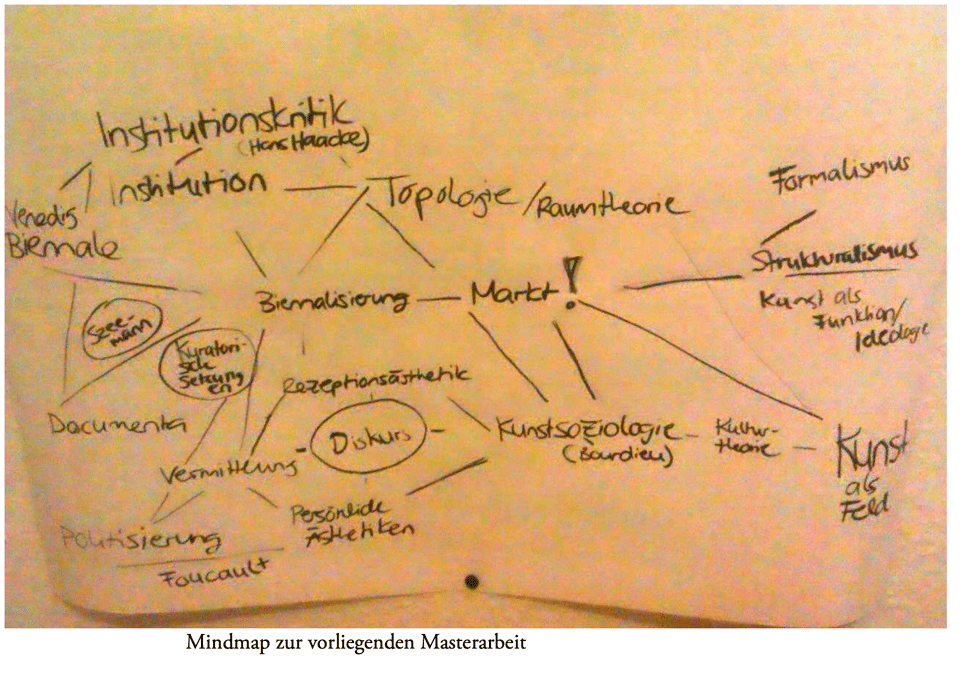
"Manche sagen so, andere sagen so": Gundula Schulze Eldowy's photographic series "Berlin in einer Hundenacht" (Bröhan-Museum) captures life in East Berlin between 1977 and 1990. The photographs depict a city marked by war and neglect with her lens focusing on the struggles and resilience of ordinary people, revealing the harsh realities of life in the former German Democratic Republic. Her encounters with deprivation or facing loss challenge societal tendencies to look away from struggles. Additional material can be found here (already missed it): Keep a stiff upper lipp! (ADK, exchange with photographer Robert Frank).
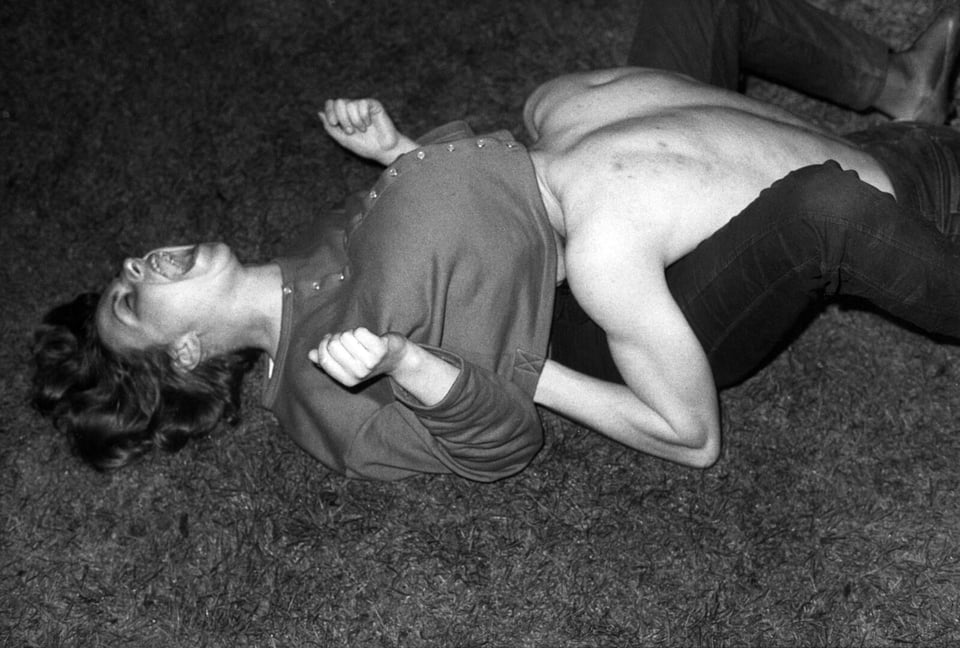
Chin up, fangs out: Every 2nd and 4th Tuesday in Heiners Bar- backroom, there is a merry band of multi-instrumentalists meeting to sing their heart out at Folk-singing session. I only managed to go once so far, but it deeply moved me - and there was a good selection of woolen jumpers present, as you'd expect. (We may drink a beer together next time, in silence - no talking (at least not to me)).

Aurora-Edition: Event series focusing on ambient, drone,
atmospheric, and experimental live acts - (currently paused as it seems)Velvet Voice Club: As TEXTE ZUR KUNST’s event series at Volksbühne, the Velvet Voice Club is conceived as an on-stage supplement, performatively expanding, critically challenging, and productively subverting the thematic focus of each forthcoming issue. Decidedly multi-perspectival the program presents an extension of the magazine’s contents, spotlighting various aspects of current topics in the fields of art, artistic practice, and academic research that are too often ignored.
Things we/you missed (selection)
STS leakage- Conference: If you want to know my academic lineage, this is it: Science and technology studies is an interdisciplinary field of research and activity interested in how science and technology are practically done and socially embedded. This conference of the the stsing- Verein explored leakage as a variegated paradigm for STS, whether as a physical phenomenon, a material metaphor, an analytical tool, or a political strategy. Unlike a sudden spill or a violent burst, leaks are sites of a slow and steady subversion: Something seeps through that should have stayed behind walls, cordoned off to prevent contamination, mixture, or mediation. The term addresses epistemic instabilities, interdisciplinary diffusion, and unintended consequences. Program looked enticing.
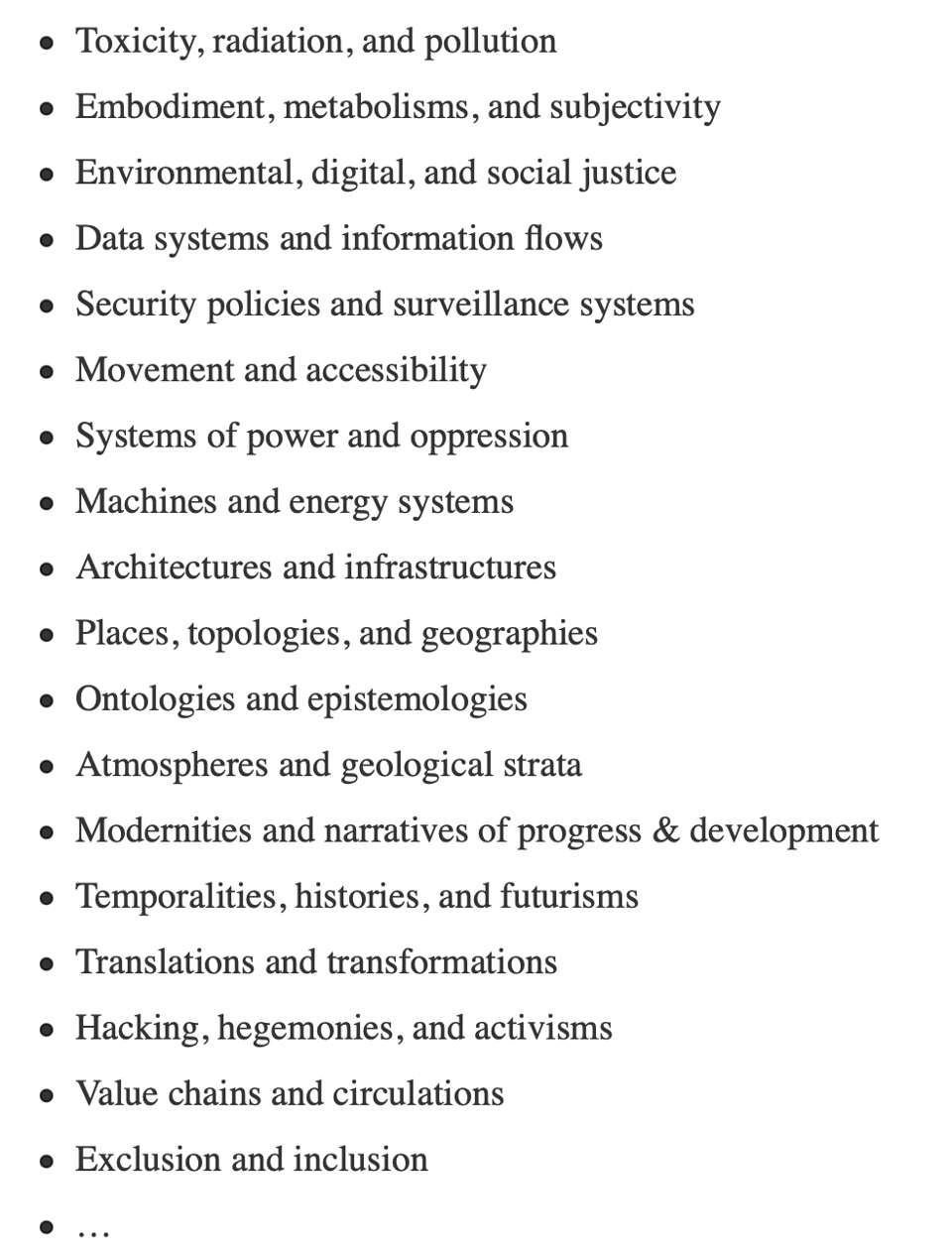
Refiguration of the Internet: This workshop explored different spatial changes and dynamics of Internet infrastructure using the notion of refiguration, which presents a concept of tensions between four key spatial figures and spatial logics: the place, the territory, the network, and the route. These tensions allow for the explanation of key conflicts in contemporary modernity. Related, this earlier event from Amsterdam: Those who control the Internet control the bounds of public speech, economic production, social cohesion, and politics, making its infrastructure a core political terrain in the networked age- enacted through material components such as cell antennas, clouds, chips, data servers, and satellites, but also less tangible, equally crucial standards and software components, including the operating systems, browsers, and computing power that enable connectivity.
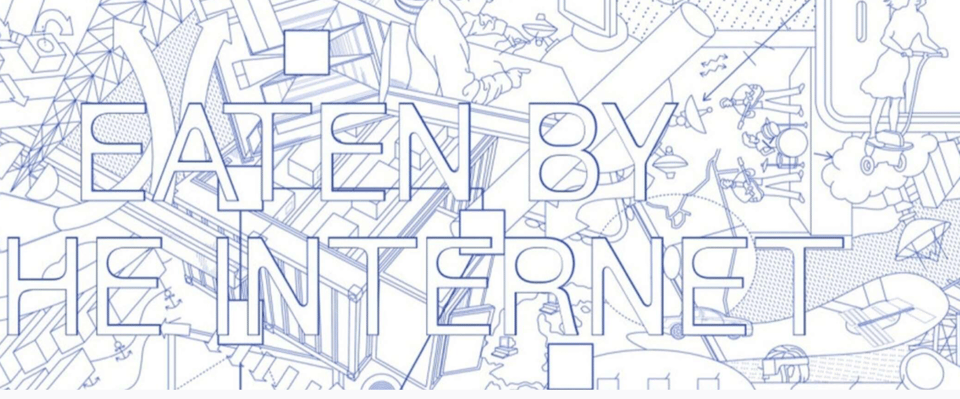
Tracing the geometry of Cyberwar (You all know ho much I appreciate events close to my physical home): Prater Digital examined in a Virtual exhibition and research space with works (and texts) by Jesikka Aro, Sarah Buser, fantastic little splash, Judith Hanke, Olga Krykun, Svitlana Matviyenko, Susan Sontag, and others the role that the internet and digital technologies play in Russias ongoing war of aggression against Ukraine as well. In this context, new strategies of warfare are being established, increasingly relying on automated and cybernetic means. Inspired by the research of scholar Svitlana Matviyenko (btw, this ICI-event including her was so, so so, good: https://www.ici-berlin.org/events/metaverse-landscapes/), the exhibition moves along three vectors of cyber warfare - those targeting people and infrastructure in occupied Ukraine, focusing on Ukraine's supporting countries, and including Russia itself.
This talk by Leigh Raiford examined how former Black Panther Party Communications Secretary Kathleen Neal Cleaver has used photography to make ‘home’ in the world, while living in exile in Algeria and France. The historical archives (documenting the work of Black internationalism in the era of Black Power, and gender politics in the context of Black revolutionary struggles) form as a family album forces us to reckon with the messiness of movements and the failures and disappointments of family relations — whether a difficult marriage, a growing community of exiles, family as a metaphor for nationalism or as a map of intergenerational kinship ties — as well as the possibilities and limitations of photography itself.
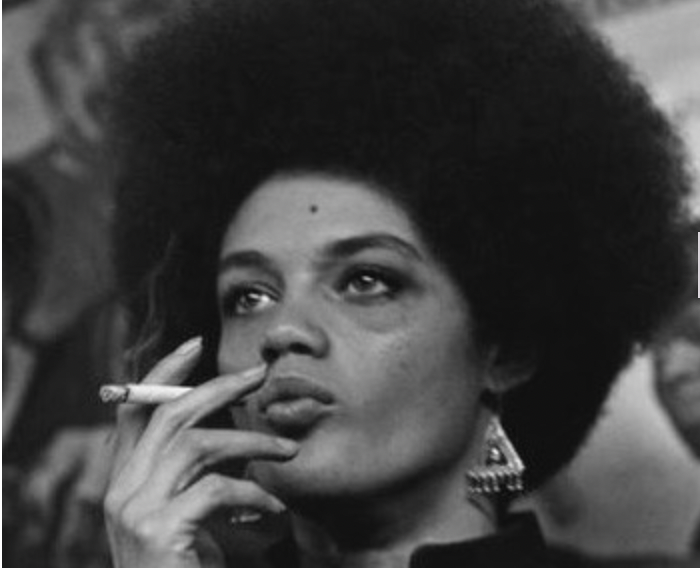
as my friend Nora reminded me of: go to the margins more often, where they are bearing the brunt of all the discontents of society. (Related, in London/Tate: Women in Revolt- comes in bundle with a podcast)
The Bad Mother (exhibition)- Haus am Lützowplatz:
Following on the titular work The Bad Mother by Louise Bourgeois, a group exhibition explored the expectations placed on motherhood. My personal favourites have all been video art, as per usual: Candice Breitz - Mother (more). Antje Engelmann's "Point of No Return" follows a journey from New York to Los Angeles touching on themes of nature, civilization, and the future against the backdrop of Engelmann's pregnancy.The late Lin May Saeed - Kolbe-Museum
Lin May Saeed's first solo show in Germany sadly opened posthumously. Her work delves into the dynamics between humans and animals, explored through sculpture. The exhibit at Kolbe-Museum also featured Renée Sintenis (designer of the Berlinale Bär)' work, sparking discussions on societal perceptions of animals. The choice of materials, such as styrofoam, adds a poignant layer: while bronze and marble will decay (surprised?), styrofoam endures. To reminisce for the "Artists on Artists" series, Slavs & Tatars produced an episode with their favourite works from the exhibition on Bloomberg Connects.
(which leads me to:) Carpet Mapping - Schloss Britz
an exhibition themed around carpets at the intersection of contemporary art and cultural history , (with artists THILO DROSTE, CATHERINE ROSE EVANS, BIRGIT HÖLMER, FARKHONDEH SHAHROUDI, HODA TAWAKOL and SLAVS AND TATARS) examining their historical significance and production. The exhibition draws parallels between carpets and maps, highlighting how both convey information through intricate patterns. Carpets furthermore symbolize narratives of migration, labor, and domestic life, carrying traces of use and repair across time and geography.
Mierle Laderman Ukeles: Touching Maintenance - The pioneering practice of feminist and multidisciplinary artist Ukeles focuses on the existential necessity and endlessness of everyday care work – be it in the private sphere, the city or the landfill. She radically declared maintenance work to be art and has been artist in residence at the New York City Department of Sanitation since 1977, engaging with urban waste flows ever since. (People might not know which field I work in now most these days: Its maintenance and infrastructure studies. So I have the utmost respect for the nooks and crannies in capitalism where communities upkeep non-extractive, caring (of course somehow interacting with the market, but not structured by it, but by self-election) - activities and artefacts.)

Skin in the game - KW: On risk and contention- the exhibition presented seminal prototypes from the personal archives of internationally acclaimed artists (Ruth Buchanan, Otobong Nkanga, Collier Schorr, Rosemarie Trockel, Joëlle Tuerlinckx, Andrea Zittel), dating back to the 1970s and crossing over into the present. The exhibits include experiments never previously shown, from paintings to sculptures, to banners, video performances, photographs, collages, drawings, books, and concept notes, focussing on that moment of professional and existential emancipation when those artists threw their skin in the game, and gave their all to art.
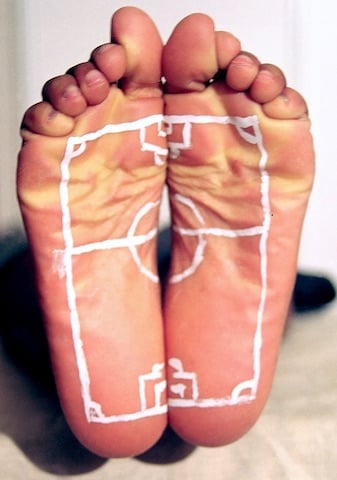
Don’t you NOMI?/ Staatsoper: Klaus Nomi, a visionary German countertenor who defied borders and genres, came from the Allgäu region of Germany and moved to New York where he achieved his breakthrough. With his crossover of opera, pop and New Wave, he was ahead of his time and became an attraction in the New York underground with his extraordinary retro-futuristic art look (inspiring Bowie i.a.). Before Nomi could see the fruits of his unwavering pursuit of artistic recognition, he died tragically as one of the first prominent victims of AIDS, lonely and poverty-stricken.
THE ASSAULT OF THE PRESENT ON THE REST OF TIME : showed historical and contemporary positions that address state violence and repression. Works from the 1930s and 1940s by Maria Luiko, Johanna Schütz-Wolff or Felix Nussbaum enter into a dialogue with artists such as Simone Fattal, or Lawrence Abu Hamdan. The project is a cooperation between the Brücke Museum and the Schinkel Pavillon invoking the connected history of the two buildings. Schinkel Pavilion is located in the garden of the former Kronprinzenpalais, which housed the New Department of the National Gallery in the early 20th century. In this world’s first public collection of Modern Art, the Brücke artists had their first museal presentation – until the National Socialists confiscated hundreds of artworks as “degenerate”. Some found their way, via detours, to the Brücke Museum, which was founded 30 years later and is dedicated to the artists’ group of the same name. Against the backdrop of the war unleashed by Russia in Ukraine, the exhibition understands the past as continuity and present. Fattal was also part of an exhibition at Kindl, together with Etel Adnan: https://www.kindl-berlin.com/adnan-fattal - The exhibition reflected the multidisciplinary oeuvre of the artists, who and offered insights into their artistic and literary work, which they produced individually as well as in collaboration.
Things from the web
Above, you saw that being in a relationship where both parties are sharing extensive creative output and manage to keep balance might work out. But it can also absolutely go the other way. Eleanor Coppola died last week- and next to the accounts of i. de Beauvoir, I cannot stress enough how ill-informed it often seems through the eyes of one spouse to be married to artists and intellectuals. See for yourself in her documentary Hearts of Darkness, where she documented her husband F. Ford Coppola toil and outbursts, describing how production challenges – including bad weather, the poor health of the actors, and other issues – delayed the filming of Apocalypse Now, drove up costs, and nearly destroyed the life and career of its director.
Made up of hundreds of street interviews done in Berlin two years after the Reunification, Former East/Former West by Shelly Silver is a surprisingly open, and at times disturbing documentary about what it means to be “German” at a particular moment in history (1991). For forty-five years, residents of this divided city lived radically different lives, both in terms of ideology and everyday experience. Silver questions the very notion of a shared language, focusing on changing definitions of words for political and economic systems - democracy, freedom, capitalism, socialism - as well as words used to describe nations and identity - nationality, Germany, history, foreigners, home. Watching the interviewees grapple with their own personal definitions of these ideologically loaded terms, viewers can't help but ask these same questions to themselves: Watch at bpb-Mediathek
Using data center locations as a starting point, this meditative film asks what we can learn about history, the economy, and global power by looking closely at infrastucture in a specific location. The data center is an entry point into the global system of internet infrastructure that is in-between scales: large enough to be overwhelming but not remote or impossible to gain access to
I will never not love academia (but also hate its pretentiousness sometimes): The Madness, Media, Milieus. Reconfiguring the Humanities in Postwar Europe - project studies a series of media and milieu practices initiated in different settings of Institutional Psychotherapy since the 1940s, carried out by medical practitioners and activists such as Francois Tosquelles, Jean Oury, Frantz Fanon or Félix Guattari. Under the fresh impression of National Socialism they developed the shared conviction that the treatment of mental illness must go hand in hand with the fight against barbarism. Instead of locking up and sedating the “mad”, dynamic relationships between patients and caregivers should shape psychiatry. The clinic La Borde (a better palace of recovery than the Zauberberg ever could be) influenced an entire generation of (French) psychiatrists, former Resistance fighters, patients, therapists, and attracted intellectuals such as the philosopher Georges Canguilhem and the poet Paul Éluard. By analyzing psychiatric techniques and their contexts as primary sources for now-canonical theoretical and philosophical texts, the cluster also provokes and critically challenges the epistemic ground of western humanities, politicizing the way the fragile foundation came to be constituted and the forces which contributed to it. Institutional psychotherapy originated during the German Occupation of France, when between 40,000 and 80.000 patients fell prey to a policy of extermination. Resisting this form of physical and political violence during the war, and consequently turning its attention to the institutional and social problems that shape mental health issues, the practices of institutional psychotherapy operated at the intersection of environmental, medical, cultural and social dimensions. (Related, but only because Frantz Fanon is obviously one of the subjects of interest: I read and liked this LRB- piece on vengeful pathologies).
Also, related, because Zauberberg is located in Davos: Have you heard about the Davos dispute? A society of fear will always make the wrong choices.(Sidenote, but also related to binaries of healthy and defective: Since the 1990s, genomics has promised cures for major challenges to human survival, among them disease, food shortages, fertility problems, and climate change. It has offered a vision of a better world by sequencing and modifying the building blocks of life. This echoes the statistical utopianism of the late nineteenth and early twentieth centuries, particularly in the measurement of norms and averages to cure social problems. At least one legacy of this thinking in the current techno-sphere is the idea that good and bad health can be assessed through biometric calculation.) A recent talk addressed the opposite potential for anti-eugenics.
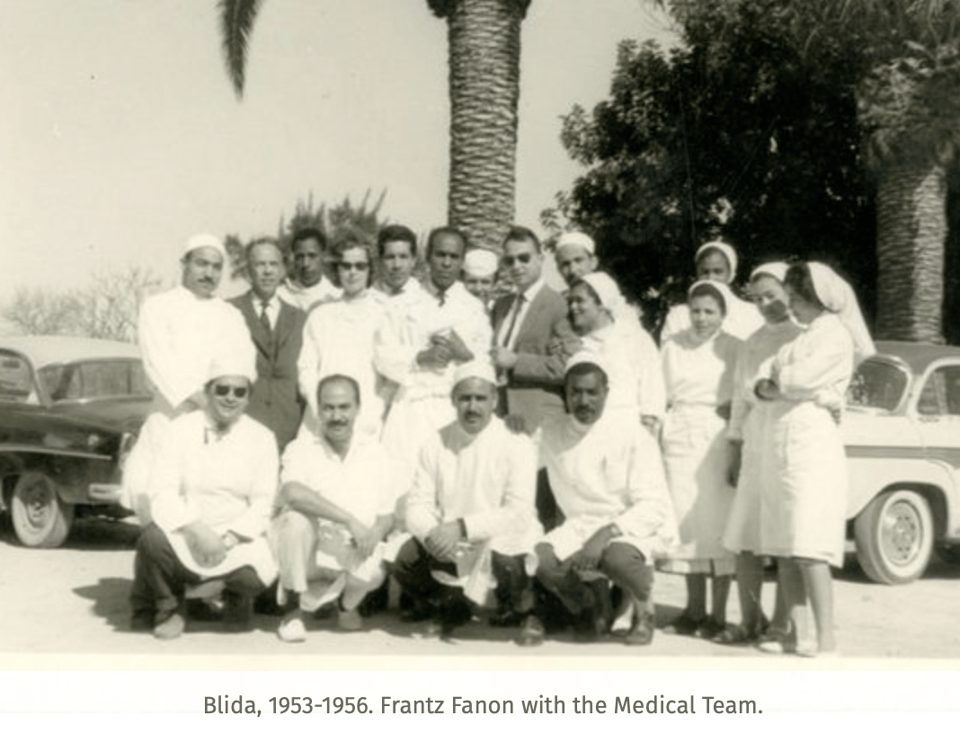
One to(o) many: a magazine that is about criticism, which means opinions.The core concept is simple: a single artwork, many different opinions. Issue 1 is dedicated to the sculpture "Office Lighting" (2008) by German artist Isa Genzken. Thirty different people from diverse backgrounds share their thoughts and opinions on the work of the prolific sculptor, who turns 75 this year. I love it, because everybody focuses on different aspects, that form the whole.
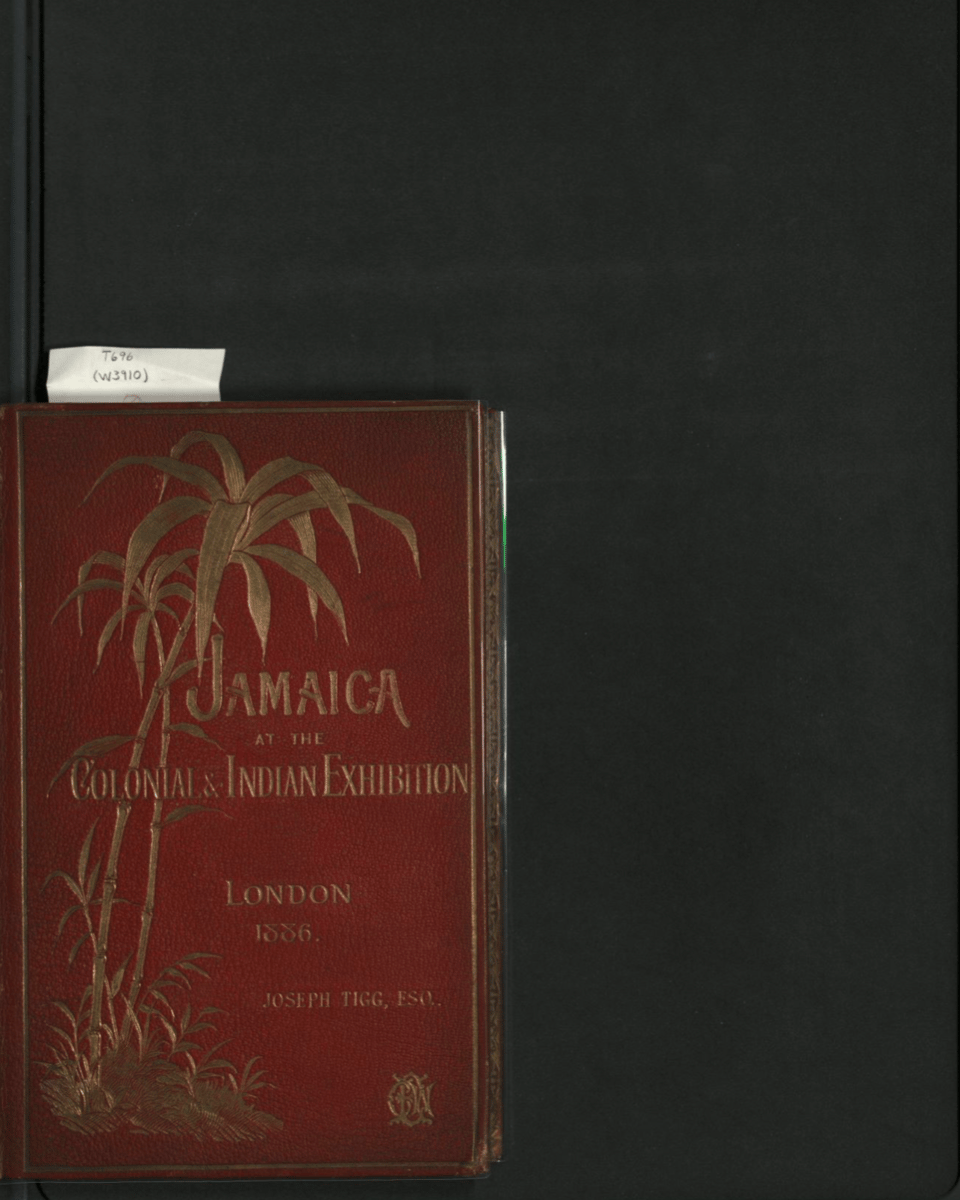
Ella den Elzen The trouble with disorderly detail: You like lush greenery? The metallic, subdued hum of machines in Botanical Gardens reveal their artifice - without such controls, tropical plants would not survive, as they have been transported to countries that are far too cold, too dark, too gray to support their life. Many of these species were extracted from other contexts and distributed through a network of gardens in Europe. Those Botanical Gardens functioned as sites of soft power - showcasing to European publics the bountiful nature of newly “discovered” species that could be cataloged, displayed, and most importantly commodified. The Berlin Botanical Garden, in particular, was operated with the goal of expansion into and extraction from the German colonies through its collection of commercially viable plants (like coffee, cocoa, palm, and teak). The trouble with disorderly detail reflects on the garden as a site of knowledge, and how it is inextricably tied to capital, land, and property. Interestingly, this artwork unwittingly communicates with these ICI events: https://www.ici-berlin.org/events/refiguring-botanical-gardens/ & https://www.ici-berlin.org/events/xiaowei-wang/ (On Biomedical Datasets and the Impossible Image. Impossible image in this case describes the botanical illustrations crucial to building the British Empire, and the ways botanical drawings emerged as a moral model.)
Coding utopias: Utopia has been, and continues to be, an at times violent gesture that chooses the future of select groups and certain forms of life at the expense of others. If utopia is conceived not only as a way of imagining a better future but also as a way of intervening in the present by addressing the past? Can it then welcome ambivalence, disquietude, paradox, opacity, and uncertainty? The symposium drew on the notion of coding, which is deployed in multiple areas ranging from genetic coding and cybernetics to politics and art, and understood it as a mode of languaging that aims at engineering futures, developing critical approaches to the concept and project of utopia from literary studies, post- and decolonial studies, science and technology studies, comparative literature, environmental humanities, psychoanalysis, history, anthropology, sexuality/gender studies, and beyond.
Pondering re:publica? These are a few of the published sessions that I found somehow interesting:
-https://re-publica.com/de/session/nie-wieder-kosmos-vom-utopischen-erzaehlen-totalitaeren-systemen
Fuck, this was long. I won’t do it again, other than maybe in a bi-monthly cadence.
See you soon out there, hope you made it until the end!
K.
